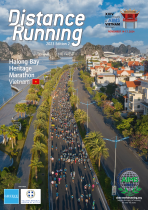Opinion
08 January 2013, 8am
Breaking barriers
The fastest anyone has run for a half marathon is Zersenay Tadese’s 58:23. The conventional wisdom is that you double that time and add five minutes to get a Marathon equivalent. Do the sums and you get a time of 2:01:46 – quite a bit faster than Patrick Makau’s current Marathon world record of 2:03:38. But Makau is not Tadese and Tadese not Makau. Makau has run fast at the Half Marathon but Tadese is yet to prove himself at the Marathon.
Using this primitive predictive formula Makau’s best at Half Marathon, 58:52, suggests he could run 2:02:44; Haile Gebrselassie’s 58:55 predicts a 2:02:50 Marathon. Haile himself came up with a very similar figure of what he thought he could ultimately run. So maybe the Marathon record is due for an improvement sometime soon.
Doping “improvements” where they remain undetected, may contribute. But the assumption must be that the general level of performance even today is similarly influenced. Any step up to a new level of performance would come with a new innovation in doping – synthetic blood, perhaps.
But there is more than one way to skin a cat – or break a record. Race organisers are today only too willing to set up pacemaking teams to help in squeezing the best out of contracted elite runners. The pacemakers on occasion are so numerous that they afford a physical windbreak for the record-attempter. While some see this as contravening existing rules of competition relating to “assistance” others advocate a liberalization to the point where “anything goes”.
Recall the “world bests” set by Tegla Lorupe in the 1990s, when she was lost amid a pack of male pacers until the final 100m of a marathon. Recall also the world best that Haile Gebrselassie set in Doha in 2002 for 10,000m on the road, running so close to a leading vehicle that he was spared any wind resistance.
As in doping, so too in other forms of assistance: the cyclists got there first. Back at the end of the 19th century Charles “Mile-a-Minute” Murphy drafted a train to set a record of 96km/h (60 mph). A mile of plywood sheets was attached to the railroad ties so that Murphy had a smooth surface to ride on behind the train.
Surely, more than a century later, we can do better than that?
Let the runner run on the road, but place him inside a surrounding structure, like a bus. Just cut a rectangular hole out of the floor so that the athlete would remain totally responsible for generating his/her own forward motion. The athlete of course, would have someone mopping their brow and passing them drinks as required – or be linked up to an intravenous feed.
They could run in nothing more than a G-string and running shoes, be given computer-generated read-outs on pace requirement and positive motivational sensory inputs via audio, video and olfactory stimulation. That way, running sub 2-hours for a marathon should be a doddle.
Any other way, and I won’t believe it.







